Special Construction of Sewer Sanitary Pipe System -Methods and Considerations
There are certain conditions that may be encountered during sewer sanitary pipe system construction. Construction consideration in these conditions, such as shown in Figure-1 and Figure-2 where sanitary sewer crossing waterway does not fall into standard construction cases and they need to be accounted for specifically.
In this article, various special construction of sewer sanitary system will be discussed.
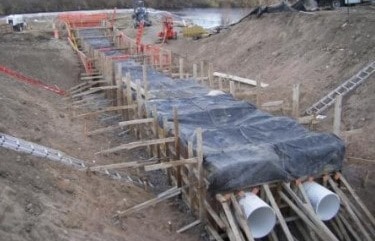
Fig.1: Sanitary Sewer Pipe Crossing Underwater, The South Platte River, USA
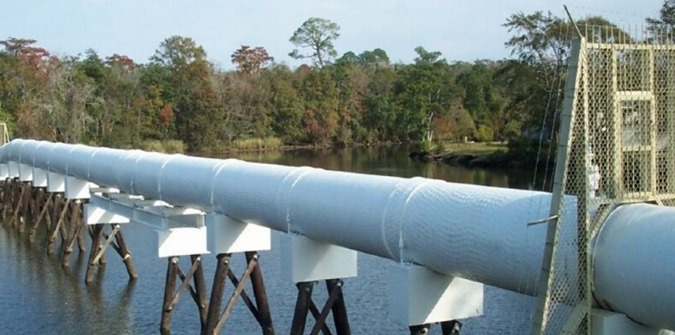
Fig.2: Arial Crossing of Sanitary Sewer Pipe Over River Water
Special Construction Methods of Sewer Sanitary Pipe System
Special construction that might come up during sanitary sewer system construction are:
- Sanitary sewer crossing railroad
- Sanitary sewer crossing Principal Traffic Arteries
- Sanitary sewer crossing under waterway
- Sanitary sewer crossing spanning waterway
Construction of Sanitary Sewer Crossing Railroad
Occasionally, sanitary sewer system need to cross under railroad track that may be on an existing railroad viaduct, on a raised embankment above street grade, or at street level. The construction of sanitary sewer system in these three cases would be explained in the following sections:
Construction of Sewer Sanitary Under Viaduct Railroad Tracks
Different methods can be applied for the construction of sewer sanitary system crossing under viaduct railroad tracks. The selection of construction technique is based on some parameters like nature of the soil at project site, sanitary sewer location in elevation and plan in relation to viaduct footing, size of sanitary sewer system and type of viaduct footing.
It is recommended to utilize tunneling approach provided that the distance between sanitary sewer and viaduct footing does not create problems and the soil in the area is stable. If such conditions are met, then the selected construction technique would be both cost effective and safe.
However, special methods of sheeting and bracing which prevents the failure of soil beneath viaduct footing should be considered if the aforementioned conditions are not realized.
Sewer Sanitary Construction Under Tracks on Embankment or At Street Level
There are various methods suitable for sewer sanitary construction under track on embankments or at street level including tunneling, boring, jacking as illustrated in Figure-3, or the combination of these techniques. By and large, pipe casing is placed in the excavated space after that sanitary sewer pipe is installed.

Fig.3: Pipe Jacking
If the distance between sanitary sewer pipe and rail footing is less that a sewer pipe diameter, then aforementioned methods are not applicable and open trench construction should be employed. This can be carried out by either introducing support to track or removing tracks until construction process is completed.
Construction of Sanitary Sewer Crossing Principal Traffic Arteries
Sometimes sanitary sewer system crosses highways with substantially heavy traffics. The comfort and convenience of travelers is a main concern in this case.
So, this concern should be considered when construction method is selected. The most preferable construction method for such condition involves jacking and tunneling.
However, streets with low traffics can be closed until the construction process is completed. It is possible to permit restricted traffics according to the width of the trench; deck can be used for medium to narrow trenches whereas momentary piling for the end support would be required if the trench width is greater than 6.7m.
Construction of Sanitary Sewer Crossing Under Waterway
Sewer sanitary system crossing under waterway can be constructed in dry condition using diversion channels or cofferdams or subaqueously.
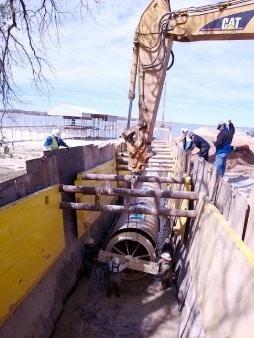
Fig.4: Subaqueous Installation of Sewer Pipes
Trench excavation and sewer pipe installation can be carried out using barges and jointing between pipes is commonly performed by divers. Ball jointing is assumed to be an efficient type which can be used underwater.
If the depth of river crossing is not high, then soil embankment can be built and half of the sewer sanitary system is constructed at a time. In this case, construction process must be planned properly. The completed portion of the system shall withstand loads imposed due to overtopping water.
Concrete encasement with minimum 9m intervals is advised to be provided along, if it is found to be necessary with joint installation and it should coincide with sewer pipe joints.
Bags of dry batched mixed concrete commonly employed for construction of bulkheads in subaqueous concrete placement is occasionally placed and graded and sewer pipes are fixed on them.
Finally, sewer pipes installed under river water is shielded against erosion and hanging boat anchor by providing a layer of rip rap to the pipe.
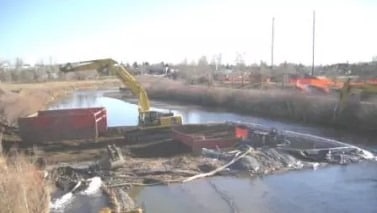
Fig.5: Half of the river was diverted at a time so the pipe could be constructed and encased in concrete
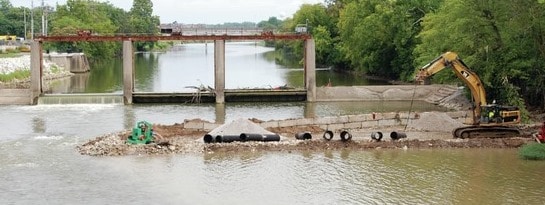
Fig.6: Installation of sanitary sewer pipe across a river, earth embankment constructed to dry the area and construct portion of sanitary sewer at a time
Construction of Sanitary Sewer Crossing Spanning Waterway
There are several methods by which sanitary sewer pipes are spanned across waterway, for example, hanging and fastening pipes to structural supports and construction of sewer pipe beams.
If the width of waterway is not wide, then manholes or other supporting structure would be installed on either side of the river and the pipe would be fixed on these supports.
However, if the width is considerably wide, then it would be necessary to provide intermediate support to have safe spanning of sewer sanitary pipes.
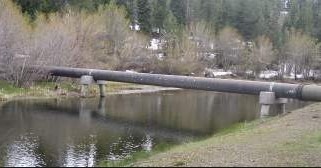
Fig.7: Aerial crossing of pipes, supports are placed on either side of the river since the width is not so wide
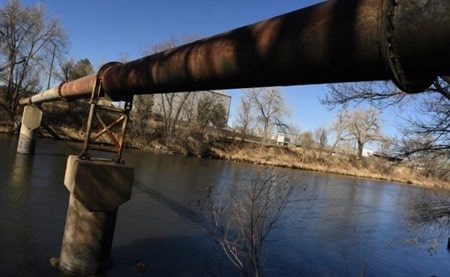
Fig.8: Sanitary Sewer Pipe Spanning Across a River
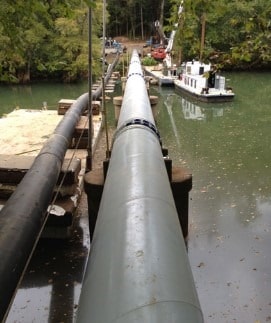
Fig.9: Sanitary Sewer Pipe Fixed on Structural Support
Comments